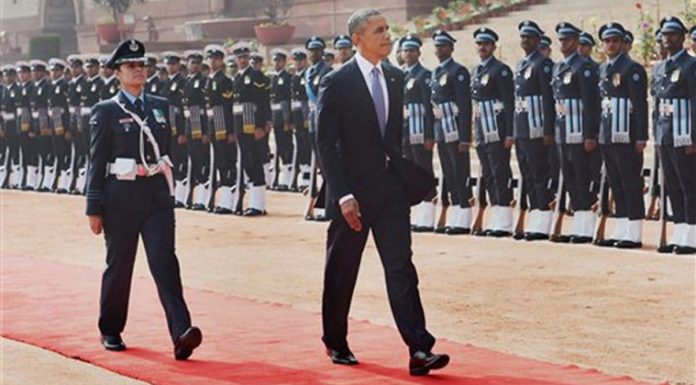68 years after Jawaharlal Nehru – the architect of the elaborate system of licenses – decreed “the noble mansion of free India where all her children may dwell”, it was yet another Prime Minister who promised to deliver to the people of India, their final freedom from the era of license raj.

Dubbed as Narendra Modi’s pet project, the ‘Start Up India, Stand Up India’ campaign was first announced during his 15th August address – Live from the Red Fort – a rather apt setting. As I listened intently to his well-delivered speech, I couldn’t suppress my smirk…“Red” fort…“Red” tapism. [Note: Red tapism owes its origin to the 18th century custom of tying up official documents using a red tape and is disapprovingly defined as ‘official rules that seem more complicated than necessary and prevent things from being done quickly.’]
The speech actually took me back to the time I interviewed a young entrepreneur, Pavan Anand, whose internationally-acclaimed jewellery label – DAGMAR – had been grabbing headlines across the world. As I sat in his plush studio, interviewing the young CEO (who was the only Indian designer to have partnered with luxury brand Versace and custom-designed pieces for the likes of Nicole Kidman, Goldie Hawn, Edward Norton, and the Royalty of Morocco), we got talking about the state of startups in India. With a business that operated the world over, I couldn’t help but ask him of his experiences with the intricacies of business and bureaucracy, to which he simply replied, “I think they actually complicate the business. The rules and regulations create so much ambiguity and confusion, with so many levels of complications that I find it’s a huge hindrance to business…which is why most people, instead of working along the system, work around it.”
That simple statement by Pavan Anand was profound! After all, wasn’t that the reality – people trying to beat the system! It was something that was also reiterated by the legendary statesman C. Rajagopalachari (the man who coined the term ‘License Raj’), who rightly believed that this would lead to political corruption and economic stagnation. He further wrote, “I want the corruption of the Permit/License Raj to go…I want real equal opportunities for all and no private monopolies created by the Permit/License Raj.”
To be honest, Nehru’s rationale is not all that difficult to see. Exports were seen as a drain of resources and foreign investment was synonymous with foreign domination. Hence, it’s not difficult to see his rationale when you remember how India’s political domination came about at the hand of a private British firm – the East India Company. Therefore, businesses – especially private businesses – were viewed with suspicion and everything was left to the will of the state. This, of course, created its own web of problems. In fact, Nehru’s labyrinth of licenses sometimes involved an approval process that spawned as many as 80 agencies, before a business would be granted a license. [The fact that it would lead to corruption and stagnation was naively overlooked.]
Although, the liberalisation policy of 1991 brought about a plethora of positive changes, it did not cull the overbearing bureaucracy in its entirety. Which is why, year after year we didn’t show much improvement in our ranking at World Bank’s Ease of Doing Business List. That, of course, looks all set to change as India jumped 12 places to be ranked at 130 (out of 189 countries) in 2016.
Hence, we are hopeful that the ambitious ‘Start up India, Stand up India’ campaign will further make it easy to set up shop in India. [Note: There’s a difference between the two – i.e. ‘Stand up India’ vs. ‘Start Up India’. While Start Up India is aimed at new entrepreneurs, Stand Up India is aimed at SC/ST and women entrepreneurs.]
Hence, the Startup India Movement (SIM) aims to fill the gaps in the economy for the growth and development of startups and grassroots entrepreneurial ventures. This will help restrict the role of state, whose job according to Union Finance Minister, Arun Jaitley, should be that of a facilitator and not a regulator. He further called the programme a landmark “campaign” that will be the final break for businesses from the era of license raj.
Jaitley further added, “[while] we ostensibly broke away from it in 1991, but the break was only partial. It was so because, who would be funded, land permissions, foreign investment proposal, environmental clearances, had the invisible role of the state. This meant venturing into new areas for an entrepreneur was very difficult. The eventual consequence of that practice restricted the energies of people and constrained them.”
“Takeaways” from the Startup India Campaign
- Compliance regime based on self-certification to reduce regulatory burden [in respect of nine labour and environmental laws with no inspection during the first three years of launch of the venture].
- Startup India Hub to act as single point of contact for the entire startup ecosystem to enable knowledge exchange and access to funding.
- Simplified Startup process whereby a startup can be registered in a day through a mobile app and online portal. Portal to also cater towards clearances, approvals and registrations.
- Patent protection to be provided to startups and 80% reduction in patent registration fee.
- Fund of funds with a corpus of Rs. 10,000 crore
- Freedom from Capital Gains Tax for 3 years.
- Income Tax Exemption for 3 years.
- Innovation hub under Atal Innovation Mission to give impetus to innovation and encourage talent.
- Innovation-focused programme for students, starting with 5 lakh schools.
- Modified and more friendly Bankruptcy Code to ensure 90-day exit window to provide faster exits for startups.
Youth’s expectations from the Startup India Campaign
A. Simplification
The youth of India does not lack entrepreneurial zeal; but the ambiguity and the complexity of the entire framework had left the youth craving for a more simplified process. Hence, the first expectation of the youth is a hassle-free process in terms of registrations, clearances, approvals, processes, taxations, etc.
B. Safety
The next item on the agenda is ‘safety’ in order to safeguard one’s idea. In a world where even big names are embroiled in patent infringement, the youth wants to be sure that the government will protect his/her idea at all cost.
C. Support
The youth is also looking for support – not just in terms of funding, international promotion, and knowledge accessibility but in terms of basic infrastructure. Hence, while it is beneficial to get free legal support for filing patents, the youth would also like the government to improve basic amenities like electricity, internet services, public distribution networks, transportation, etc.
D. Solution
The youth further expects the bureaucracy and the government to be a part of the solution instead of creating problems. Hence, policies are expected to help startups, without the problems of red tape, bureaucratic bribes, and kickbacks.
E. Stability
The biggest factor for any business – be it a startup or an existing venture – is the stability in policies, rules & regulations. Hence, the youth too expects the policies to remain stable and not change with every change in government.































